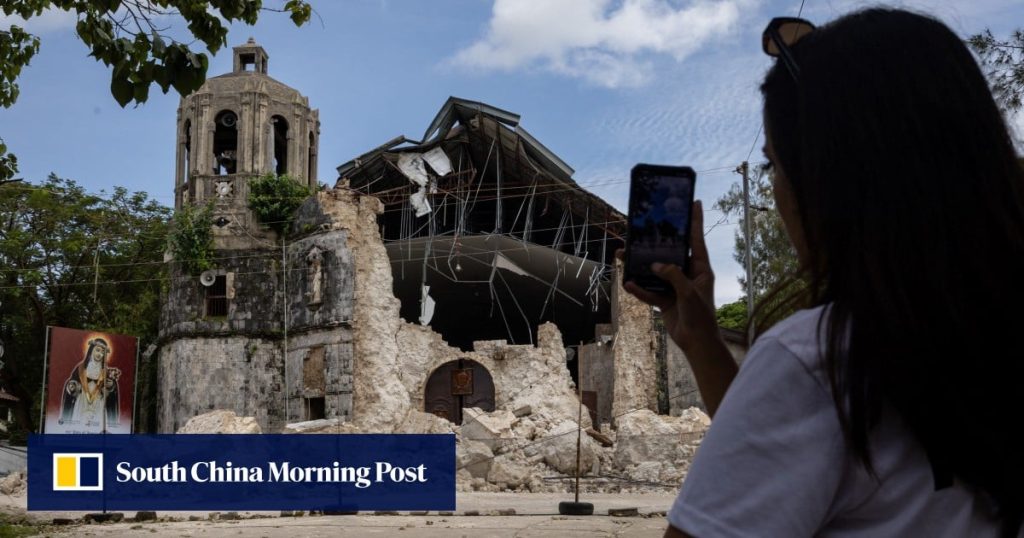The latest disasters have highlighted shortcomings ranging from weak enforcement of building codes to chronic underfunding of related scientific programmes, according to the analysts.
Those weaknesses were on full display when two successive typhoons unleashed flooding and landslides across Luzon and Visayas last month, leading to dozens dead and thousands evacuating their homes.
The Philippines was still reeling from these disasters when a magnitude 6.9 earthquake hit its central region on Tuesday, toppling homes and reducing centuries-old churches to rubble. At least 72 people were confirmed dead and nearly 300 were injured, making it the country’s deadliest quake in more than a decade.
The epicentre was located just 21km (13 miles) northeast of Bogo on Cebu island. With the epicentre’s shallow depth of 5km, seismic energy triggered by the quake had less distance to travel, resulting in more intense shaking and heavier damage.
In the town of San Remigio, part of a sports complex collapsed during a basketball game, killing three spectators. A village where survivors of the 2013 super typhoon Haiyan lived in what were meant to be disaster-resilient homes reported 10 people dead.


